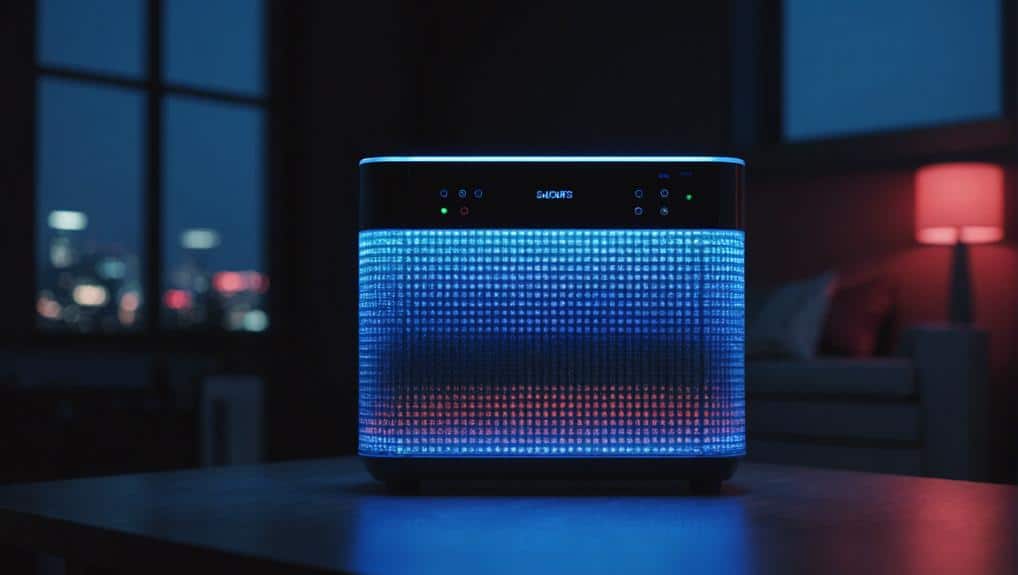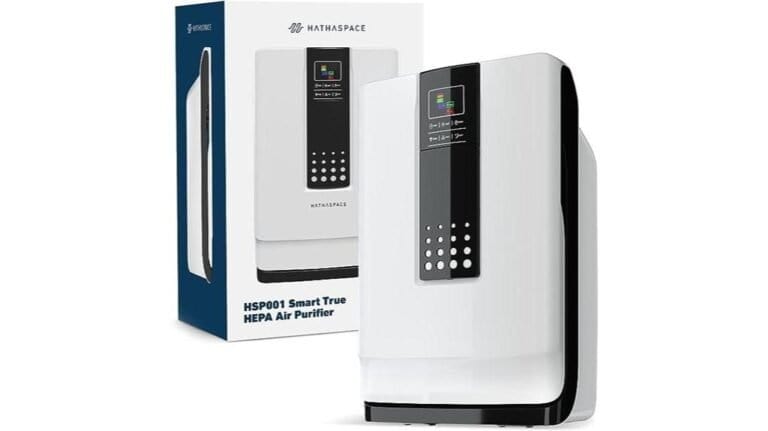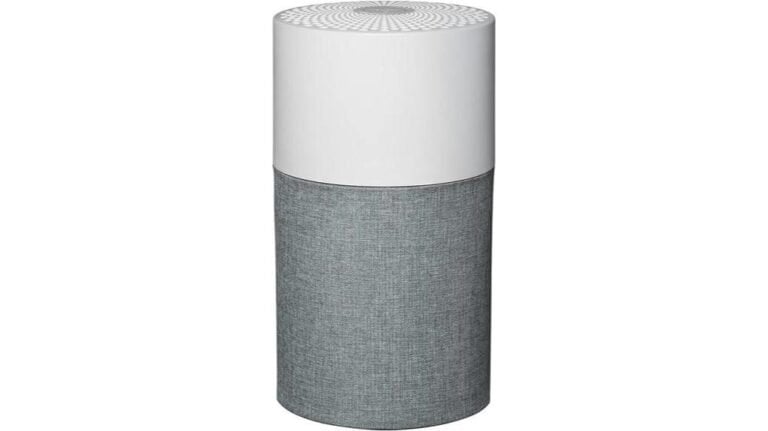Understanding Air Purifier Lights and Their Function
As we explore the domain of air purifiers, it becomes evident that understanding their accompanying lights is key to optimizing their performance. These lights serve as silent communicators, shedding light on the quality of the air we breathe.
But what do these colors truly signify, and how can we leverage this knowledge to enhance our indoor environment? Let’s delve into the mysterious world of air purifier lights and reveal the secrets they hold, guiding us towards a healthier and more comfortable living space.
Importance of Air Purifier Lights
Air purifier lights play an essential role in providing immediate feedback on the air quality status in a room, aiding users in maintaining a healthy indoor environment. The air quality indicator, displayed through these lights, offers a quick glimpse into whether the air is clean, moderately polluted, or in need of urgent purification.
Understanding the color codes on the air purifier display is critical for effective monitoring. For instance, a green light typically signifies good air quality, while yellow may indicate a moderate level of pollution, and red signals poor air quality that requires immediate attention. This intuitive system empowers users to take proactive measures to improve the indoor air they breathe.
Different Light Indicators on Air Purifiers
Let’s explore the different light indicators on air purifiers, including what each color signifies, their importance in evaluating air quality, and how to troubleshoot any issues related to these lights.
Understanding the meanings behind the indicator lights can guide us in maintaining a healthier indoor environment by taking appropriate actions based on the real-time feedback provided.
These light indicators play an essential role in promoting awareness and proactive measures for better air quality.
Indicator Light Meanings
Understanding the different light indicators on air purifiers is essential for effectively monitoring and improving indoor air quality. Indicator light meanings play a significant role in providing users with real-time feedback on the air quality status. These lights typically use color codes such as green for good air quality, yellow for moderate, and red for poor.
Light Color Significance
Referencing the color indicators on air purifiers helps us promptly interpret and respond to varying levels of indoor air quality, with green typically denoting good air quality and yellow or red indicating poorer conditions. Understanding these color codes is essential for effective monitoring. Below is a table summarizing the significance of different light colors on air purifiers:
| Light Color | Air Quality | Action Required |
|---|---|---|
| Green | Good | Maintain |
| Yellow | Fair | Monitor closely |
| Red | Poor | Take action |
Troubleshooting Guide for Lights
When troubleshooting the different light indicators on air purifiers, swift identification of the issue is important for prompt resolution. Some common light indicators include those for air quality levels (green for good, yellow for moderate, red for poor), filter replacement reminders, and UV-C light technology activation.
Understanding the meaning behind these lights is essential for maintaining ideal air quality in your space. If you notice unusual or flashing lights, consult the user manual or app for guidance on what the specific indicator means. In some cases, resetting the air purifier or cleaning the filters may resolve the issue.
Regularly checking and interpreting these lights helps ensure that your air purifier is functioning effectively and providing you with clean, purified air.
Significance of Green Light on Air Purifiers
The presence of a green light on air purifiers typically indicates excellent indoor air quality. When the green light is illuminated, it serves as a signal that the air within your space is clean and free from harmful pollutants. This visual cue offers users a sense of control and assurance that the air they’re breathing is at a desirable quality level. By relying on the green light, individuals can easily identify when their air purifier is effectively maintaining a healthy indoor environment.
Observing the green light on your air purifier can be a reassuring experience, providing immediate feedback that the device is operating efficiently. This simple indicator simplifies the process of monitoring air quality, allowing users to quickly assess the effectiveness of their air purifier. Embracing the presence of the green light fosters a sense of confidence in the air purification system’s ability to maintain clean and fresh indoor air.
Understanding Yellow Light on Air Purifiers
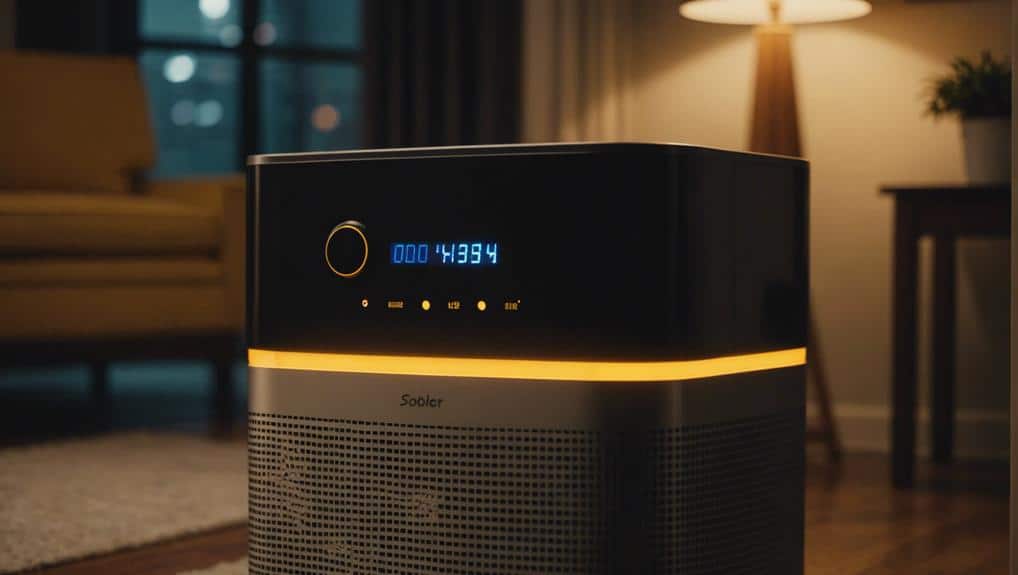
Upon glancing at a yellow light on your Philips Air Purifier, you’ll likely be alerted to moderate to fair indoor air quality. This signal from the HEPA filter-equipped purifier serves as a cautionary reminder for users to stay vigilant about potential air quality issues. The yellow light indicates that the air quality mightn’t be at its best and suggests a need for increased air purification or ventilation within the room. It prompts users to take proactive measures to enhance the air quality, such as adjusting the purifier settings or addressing potential sources of pollution.
Understanding the significance of the yellow light on your Philips Air Purifier is important for maintaining a healthier indoor environment. By responding promptly to this signal, users can actively improve the air quality and create a more comfortable living space. Monitoring the yellow light and taking appropriate actions will contribute to better air purification and maintain a cleaner and fresher atmosphere in your home.
Interpretation of Red Light on Air Purifiers
In instances where a red light appears on air purifiers, immediate action may be necessary to address potential poor air quality concerns. The red light serves as an important warning signal, indicating that the air quality may be compromised or unhealthy. This signal typically flashes briefly for measurement before remaining solid to signify sustained poor air quality. When faced with a red light indication, users should consult the user manual or app for specific guidance on interpreting the red light’s message accurately.
To regain control over air quality, proactive measures should be taken promptly. Adjusting the air purifier settings or identifying and mitigating potential sources of pollution can help improve the air quality in your indoor environment. By responding promptly to the red light signal on air purifiers, you can take charge of your surroundings and maintain a healthier living space. Remember, the red light is a call to action, prompting you to address any underlying issues affecting the air quality in your home.
Using Light Indicators to Improve Indoor Air Quality
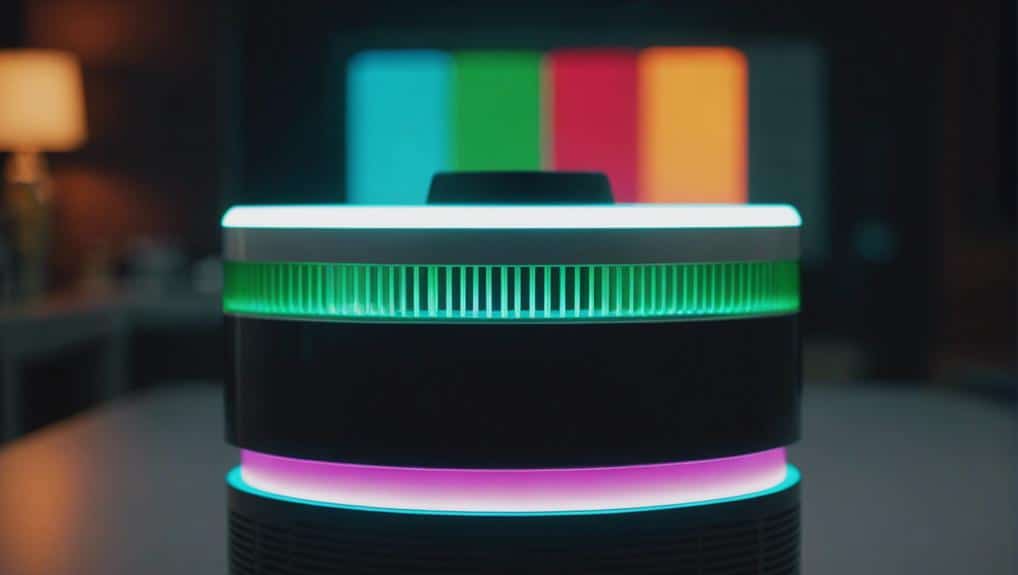
Upon noticing a change in the air purifier lights, we can swiftly respond to improve indoor air quality by understanding the color indicators and taking appropriate measures. The air quality indicator lights play an essential role in helping us maintain a healthy environment.
Here are four ways we can use light indicators to enhance indoor air quality:
- Immediate Action: When the light shifts from green to yellow or red, we can promptly address any issues by adjusting the settings on our air purifiers or increasing ventilation.
- Regular Monitoring: By regularly checking the color of the indicator lights, we can stay informed about the air quality in our surroundings and make adjustments as needed.
- Utilizing UVC Air Purifiers: Investing in UVC air purifiers with indicator lights can provide added assurance of effective air purification, ensuring a cleaner indoor environment.
- Consulting Manuals: Referencing the user manual or accompanying app can offer insights into the meaning behind different light colors, empowering us to make informed decisions for better indoor air quality.
Troubleshooting Air Purifier Lights
When troubleshooting air purifier lights, we can quickly identify potential issues by understanding the color codes and their corresponding meanings. Air purifiers utilize color indicators like green, yellow, and red to represent different air quality levels, providing users with instant feedback on indoor air cleanliness.
By referring to user manuals or apps, individuals can easily interpret these color codes and determine the current state of their air quality. Real-time monitoring facilitated by the intuitive feedback system of the lights allows for proactive steps to be taken to enhance indoor air quality.
If the light remains in the red zone despite efforts to improve air quality, it may indicate persistent pollutants or issues with the purifier itself, prompting the need for further investigation or maintenance. Understanding these color indicators empowers users to make informed decisions to create a healthier living environment.
Maximizing Air Purifier Light Functionality
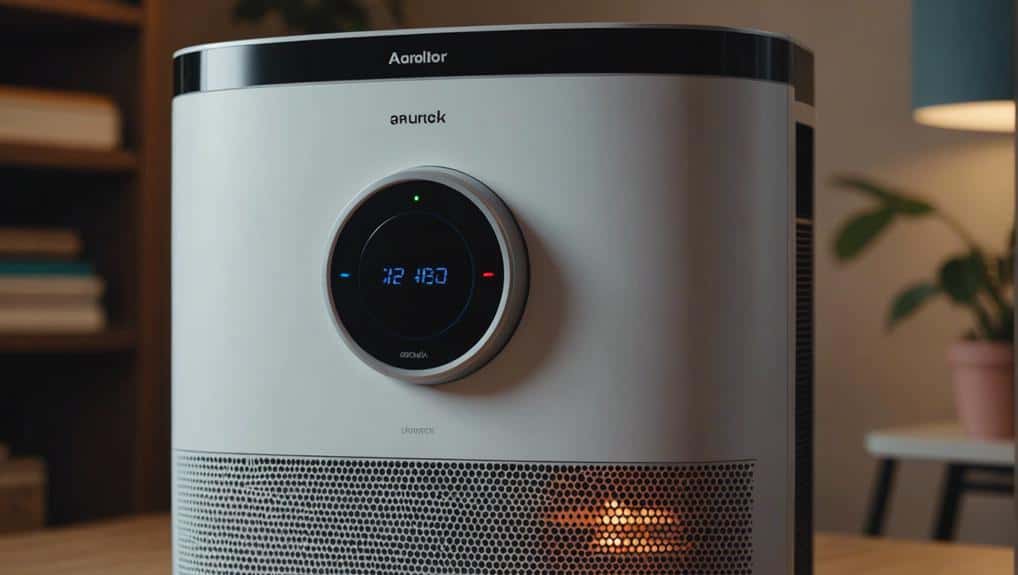
Exploring ways to optimize air purifier light functionality enhances user experience and promotes healthier indoor environments. When it comes to maximizing the effectiveness of air purifier lights, there are several strategies to take into account:
- Placement Matters: Position your air purifier in a central location within the room to make sure that the light indicators are easily visible from various angles.
- Routine Check-ups: Regularly inspect the color codes on the air purifier lights to stay informed about the current air quality status and address any issues promptly.
- Customize Settings: Some air purifiers allow users to adjust the sensitivity of the light indicators based on personal preferences, providing a more tailored experience.
- Integration with Smart Devices: Connect your air purifier to a smart home system or app for seamless monitoring of air quality levels and receive alerts for necessary actions.
Conclusion
Overall, understanding air purifier lights and their function is essential for maintaining a healthy indoor environment.
By paying attention to the different light indicators, such as green, yellow, and red, we can take immediate action to address any air quality issues.
These lights serve as a visual guide to help us improve the air we breathe and create a cleaner living space for ourselves and our loved ones.
Let’s continue to utilize this valuable tool for better indoor air quality.
